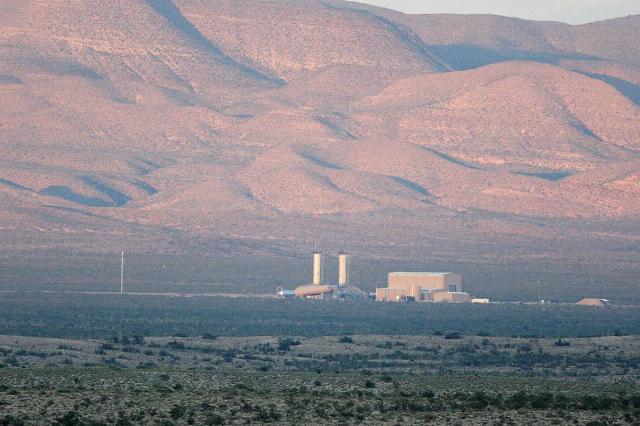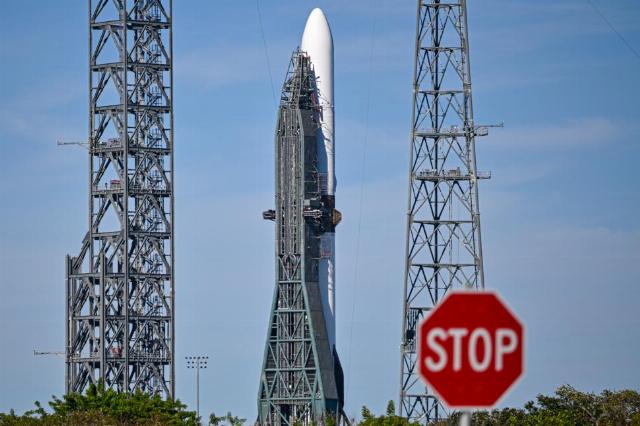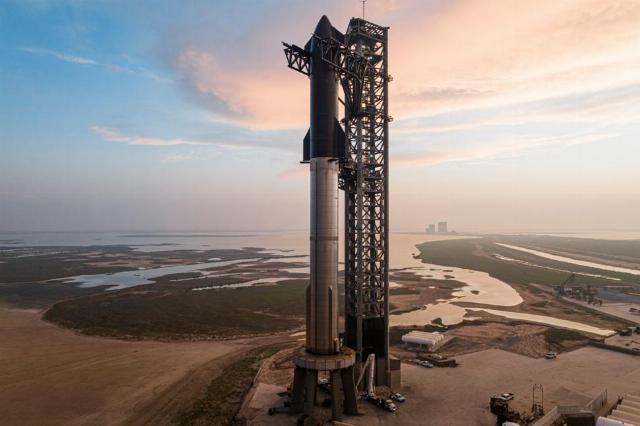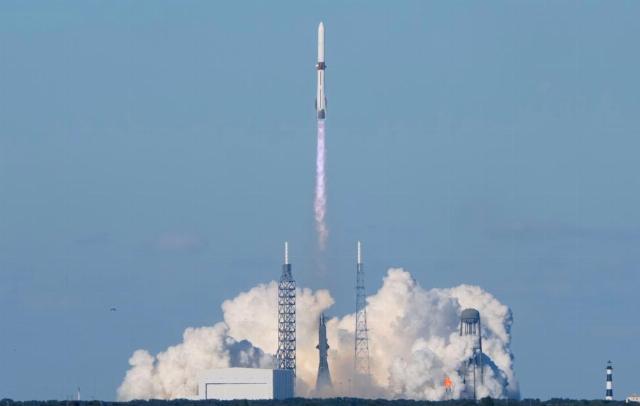Blue Origin's New Glenn heavy launch vehicle launched two spacecraft into space to study the Martian magnetosphere. The first stage of the rocket successfully landed on an offshore platform for the first time. TASS — about the formation of a new player in the space services market
Blue Origin was founded in 2000 by American billionaire Jeff Bezos, the founder of Amazon, one of the richest people on the planet. On March 5, 2005, the Charon experimental vehicle, created by Blue Origin engineers to study vertical flight modes with jet propulsion, made a successful flight. The angular truss structure, powered by four turbojet engines with thrust deflection devices, rose smoothly to a hundred-meter height, and then landed.
On November 13, 2006, another experimental vehicle of the Bezos aerospace company, Goddard, named after the American pioneer of rocket technology Robert Goddard, took off vertically and successfully landed. Goddard looked like a spacecraft lander and was powered by a Blue Origin BE-1 engine powered by hydrogen peroxide. The company develops power plants, a key high—tech component of launch vehicles, independently or in cooperation with other manufacturers.
 |
| Blue Origin Launch Complex in Texas, USA James Nielsen/ Houston Chronicle via Getty Images. |
| Source: © James Nielsen/ Houston Chronicle via Getty Images |
In 2011, another prototype from Blue Origin, more like a rocket, the PM—2, was tested. The cylindrical device with a spherical fairing was lost during the second test flight at a speed exceeding sound speed and at an altitude of about 14 km.
In 2015, Blue Origin began test launches of a full-fledged spacecraft designed for space tourism. It was named New Shepard in honor of astronaut Alan Shepard, the first American to make a suborbital flight. The ship consists of a returnable rocket stage and a detachable capsule with passengers (up to six people) descending by parachute. On April 29, 2015, New Shepard 1 reached an altitude of 93.5 km and successfully returned to Earth, but the rocket stage was lost. On November 23, 2015, New Shepard 2 rose slightly above 100 km (according to the definition of the International Aviation Federation, it is at this altitude that outer space begins), and the capsule and rocket booster landed safely.
On July 20, 2021, New Shepard crossed the boundary of space for the first time with passengers on board. The flight, which took place in automatic mode, lasted 11 minutes, of which three were weightless on board. In the capsule of the device were the founder of Blue Origin himself, his younger brother Mark, 82-year-old Wally Frank, who once completed an astronaut training program, and 18-year-old Dutchman Oliver Damen. The flight became a record-breaking one: Frank became the oldest person in history to go into space, Damen became the youngest.
 |
| New Shepard launch vehicle, 2021 Joe Raedle/ Getty Images. |
| Source: © Joe Raedle/ Getty Images |
Regular launches of New Shepard with space tourists followed, to date the device has completed 36 flights. On October 8, 2025, another six people crossed the lower boundary of outer space. Thus, the number of earthlings who have been in space with the help of New Shepard has increased to 86 people. The ticket price was not disclosed, but it is known that the program competes with Virgin Galactic, which has a seat in a suborbital rocket plane worth $ 600 thousand.
Entering orbit
In 2014, Blue Origin announced a collaboration with the American company United Launch Alliance (ULA) on the issue of joint development of a national engine for space launch vehicles. The fact is that the American Atlas V carrier uses Russian RD-180 liquid rocket engines, which the United States decided to abandon amid the deterioration of US-Russian relations. It was announced that the jointly created BE-4 engine would be used in promising rockets from both ULA and Blue Origin. Looking ahead: To date, the US Air Force, one of ULA's main customers, believes that this import substitution is taking place "disappointingly slowly."
The BE-4 was useful for the New Glenn heavy launch vehicle (the name was chosen in honor of astronaut John Glenn), the creation of which ru/kosmos/3615456" target="_blank" rel="nofollow">became known in 2016. The rocket is capable of launching up to 45 tons into low—Earth orbit and 13 tons into geostationary transition orbit, that is, it can launch several communication satellites and multi-ton modules for a promising orbital station. The first stage, equipped with the BE-4 engine, is reusable and lands on an offshore platform, which returns it to the launch site. The platform is named after Bezos' mother, Jacklyn. The second stage is equipped with two BE-3U engines.
For the New Glenn launches, the company has begun construction of its own site at the famous Cape Canaveral Space Center. In 2017, the first contract for Blue Origin launch services using a new rocket was signed, followed by others.
 |
| New Glenn Miguel J. Rodriguez Carrillo launch vehicle/ Getty Images. |
| Source: © Miguel J. Rodriguez Carrillo/ Getty Images |
On January 16, 2025, New Glenn made its first flight, successfully entering orbit. The first stage could not be saved. During the second rocket launch on November 14 of this year, the launch stage successfully landed 9 minutes after takeoff in the center of the Jacklyn platform, floating 600 km from the launch site.
For the future
Blue Origin company states several goals of its activities. First on the list is a radical reduction in the cost of "access to space." According to the company, the repeated use of launch vehicles will help in this.
"Our rockets, New Shepard and New Glenn, were originally designed with the possibility of reuse in mind," the company's website says. — Each vehicle is designed for vertical takeoff and landing, which makes it possible to reuse the first stage up to 25 times with minimal recovery. The rockets are equipped with reusable thrust-controlled liquid engines."
Another goal is to use the resources of other celestial bodies. "The road to space will be paved based on the boundless treasures of the Solar System," Blue Origin is confident. For example, the company is considering the possibility of using lunar soil to build solar power plants, manufacture electrical wiring, and produce oxygen for fuel and astronauts. The ice, which is supposed to be found at the south pole of the Moon, will produce hydrogen for refueling spacecraft.
Jeff Bezos, founder of Blue Origin
Finally, the Club for the Future, a non-profit organization founded by Blue Origin, seeks to inspire young people by educating new generations of scientists, engineers, and artists. For example, with the help of the organization, anyone can send into space a drawing of how they represent the future — a postcard will be placed in the New Shepard suborbital spacecraft, lifted above the boundary of outer space and returned to the sender with a special mark. Representatives of the Club for the Future also organize thematic lectures.
 |
| The first test launch of the Starship launch vehicle, 2023 Official SpaceX Photos on Flickr/ CC BY-NC 2.0. |
| Source: © Official SpaceX Photos on Flickr/ CC BY-NC 2.0 |
A new player
With the start of the successful launches of New Glenn, a competitor to Elon Musk's SpaceX company appeared on the launch services market, which became a symbol of a private initiative in the field of space programs. In addition, Blue Origin is already developing a superheavy class carrier. Its first stage will be equipped with nine engines, and the second with four. The payload volume under the head fairing will increase by 70% compared to the existing New Glenn variant, and the mass of cargo being launched into orbit will increase to 70 tons. Musk's Starship system is even more impressive: it is assumed that the 121-meter rocket will be able to lift 100-150 tons, returning both stages to Earth. However, its tests are proceeding with varying success, which may jeopardize the timing of the implementation of the new American lunar program — the United States is going to re-land astronauts on the lunar surface in 2027. Bezos, on the other hand, takes a more pragmatic step-by-step approach to testing systems. No wonder Blue Origin's motto is the phrase Gradatim Ferociter, which means "persistently, step by step" in Latin. Among the plans of the Bezos aerospace company is the creation of a commercial Orbital Reef station. It was supposed to start functioning in orbit no later than 2030, and a science fiction film is going to be shot on it.
The European Space Agency (ESA) is sounding the alarm : due to the actual lack of its own launch vehicle, as well as the refusal to cooperate with Russia, Europe's space programs have become critically dependent on the United States. "We urgently need to catch up with [SpaceX] and make sure that we introduce a reusable launch vehicle to the market relatively quickly," said ESA chief Josef Aschbacher. The European Union plans to create its own constellation of communications satellites, similar to SpaceX's Starlink, and for this it needs its own rocket. Airbus, Thales and Leonardo are going to jointly develop space programs, and the consortium may start work in 2027.
Russia has a range of launch vehicles from light to heavy, a manned spacecraft, several spaceports, its own GLONASS satellite navigation system with several dozen vehicles in orbit, telecommunications satellites, and the launch of the first module of a promising Russian orbital station is scheduled for the end of 2027.
Domestic reusable rockets are also being developed. In June 2025, the head of the Roscosmos state corporation, Dmitry Bakanov, announced that it was planned to launch a promising Amur rocket with a returnable first stage at the turn of 2027-2028.
Victor Bodrov

